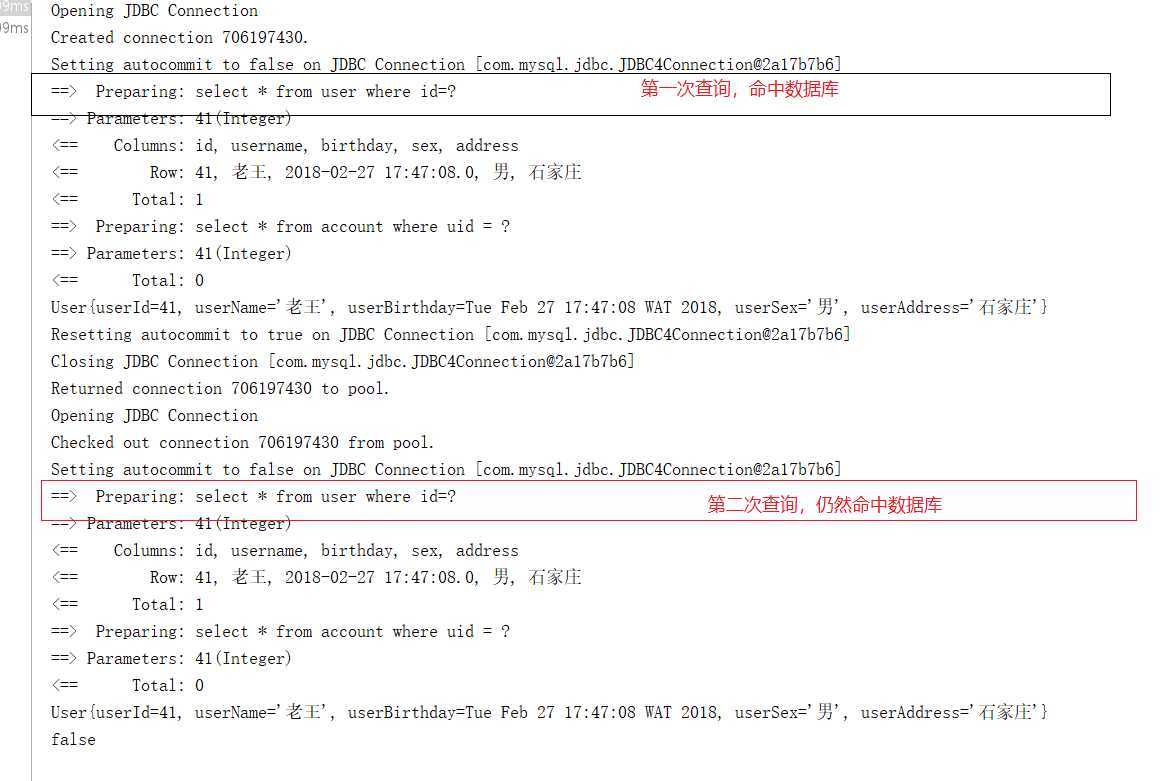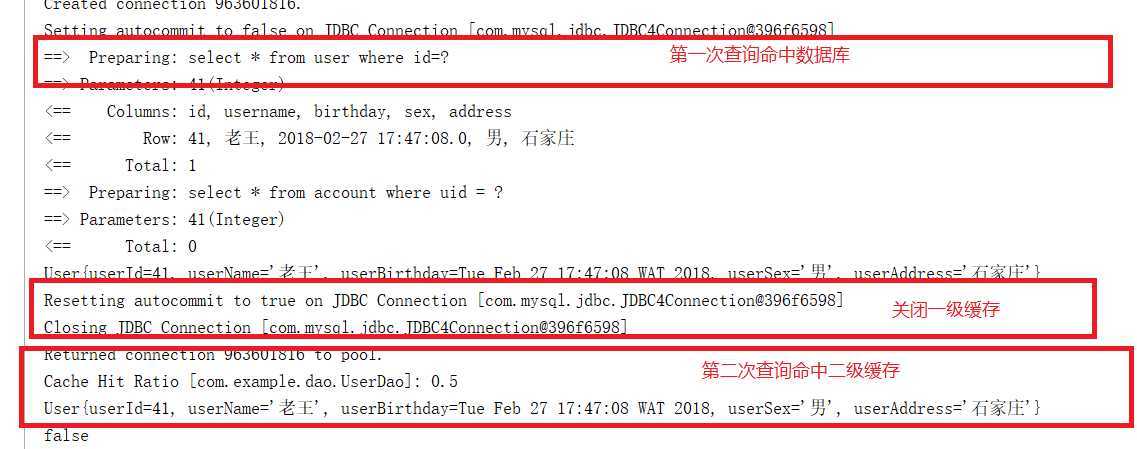Mybatis基于注解开启使用二级缓存
Posted hopeofthevillage
tags:
篇首语:本文由小常识网(cha138.com)小编为大家整理,主要介绍了Mybatis基于注解开启使用二级缓存相关的知识,希望对你有一定的参考价值。
关于Mybatis的一级缓存和二级缓存的概念以及理解可以参照前面文章的介绍。前文连接:https://www.cnblogs.com/hopeofthevillage/p/11427438.html,上文中二级缓存使用的是xml方式的实现,本文主要是补充一下Mybatis中基于注解的二级缓存的开启使用方法。
1.在Mybatis的配置文件中开启二级缓存
<?xml version="1.0" encoding="UTF-8" ?> <!DOCTYPE configuration PUBLIC "-//mybatis.org//DTD Config 3.0//EN" "http://mybatis.org/dtd/mybatis-3-config.dtd"> <configuration> <settings> <!--开启全局的懒加载--> <setting name="lazyLoadingEnabled" value="true"/> <!--<!–关闭立即加载,其实不用配置,默认为false–>--> <!--<setting name="aggressiveLazyLoading" value="false"/>--> <!--开启Mybatis的sql执行相关信息打印--> <setting name="logImpl" value="STDOUT_LOGGING" /> <!--默认是开启的,为了加强记忆,还是手动加上这个配置--> <setting name="cacheEnabled" value="true"/> </settings> <typeAliases> <typeAlias type="com.example.domain.User" alias="user"/> <package name="com.example.domain"/> </typeAliases> <environments default="test"> <environment id="test"> <!--配置事务--> <transactionManager type="jdbc"></transactionManager> <!--配置连接池--> <dataSource type="POOLED"> <property name="driver" value="com.mysql.jdbc.Driver"/> <property name="url" value="jdbc:mysql://localhost:3306/test1"/> <property name="username" value="root"/> <property name="password" value="123456"/> </dataSource> </environment> </environments> <mappers> <package name="com.example.dao"/> </mappers> </configuration>
开启缓存 <setting name="cacheEnabled" value="true"/>,为了查看Mybatis中查询的日志,添加 <setting name="logImpl" value="STDOUT_LOGGING" />开启日志的配置。
2.领域类以及Dao
public class User implements Serializable private Integer userId; private String userName; private Date userBirthday; private String userSex; private String userAddress; private List<Account> accounts; 省略get和set方法...... import com.example.domain.User; import org.apache.ibatis.annotations.*; import org.apache.ibatis.mapping.FetchType; import java.util.List; @CacheNamespace(blocking = true) public interface UserDao /** * 查找所有用户 * @return */ @Select("select * from User") @Results(id = "userMap",value = @Result(id = true,column = "id",property = "userId"), @Result(column = "username",property = "userName"), @Result(column = "birthday",property = "userBirthday"), @Result(column = "sex",property = "userSex"), @Result(column = "address",property = "userAddress"), @Result(column = "id",property = "accounts",many = @Many(select = "com.example.dao.AccountDao.findAccountByUid",fetchType = FetchType.LAZY)) ) List<User> findAll(); /** * 保存用户 * @param user */ @Insert("insert into user(username,birthday,sex,address) values(#username,#birthday,#sex,#address)") void saveUser(User user); /** * 更新用户 * @param user */ @Update("update user set username=#username,birthday=#birthday,sex=#sex,address=#address where id=#id") void updateUser(User user); /** * 删除用户 * @param id */ @Delete("delete from user where id=#id") void deleteUser(Integer id); /** * 查询用户根据ID * @param id * @return */ @Select("select * from user where id=#id") @ResultMap(value = "userMap") User findById(Integer id); /** * 根据用户名称查询用户 * @param name * @return */ // @Select("select * from user where username like #name") @Select("select * from user where username like ‘%$value%‘") List<User> findByUserName(String name); /** * 查询用户数量 * @return */ @Select("select count(*) from user") int findTotalUser();
3.在对应的Dao类上面增加注释以开启二级缓存
@CacheNamespace(blocking = true)
4.测试
public class UserCacheTest private InputStream in; private SqlSessionFactory sqlSessionFactory; @Before public void init()throws Exception in = Resources.getResourceAsStream("SqlMapConfig.xml"); sqlSessionFactory = new SqlSessionFactoryBuilder().build(in); @After public void destory()throws Exception in.close(); @Test public void testFindById() //第一查询 SqlSession sqlSession1 = sqlSessionFactory.openSession(); UserDao userDao1 = sqlSession1.getMapper(UserDao.class); User user1 = userDao1.findById(41); System.out.println(user1); //关闭一级缓存 sqlSession1.close(); //第二次查询 SqlSession sqlSession2 = sqlSessionFactory.openSession(); UserDao userDao2 = sqlSession2.getMapper(UserDao.class); User user2 = userDao2.findById(41); System.out.println(user2); sqlSession1.close(); System.out.println(user1 == user2);
(1)未开启二级缓存时

(2)开启二级缓存时

以上是关于Mybatis基于注解开启使用二级缓存的主要内容,如果未能解决你的问题,请参考以下文章